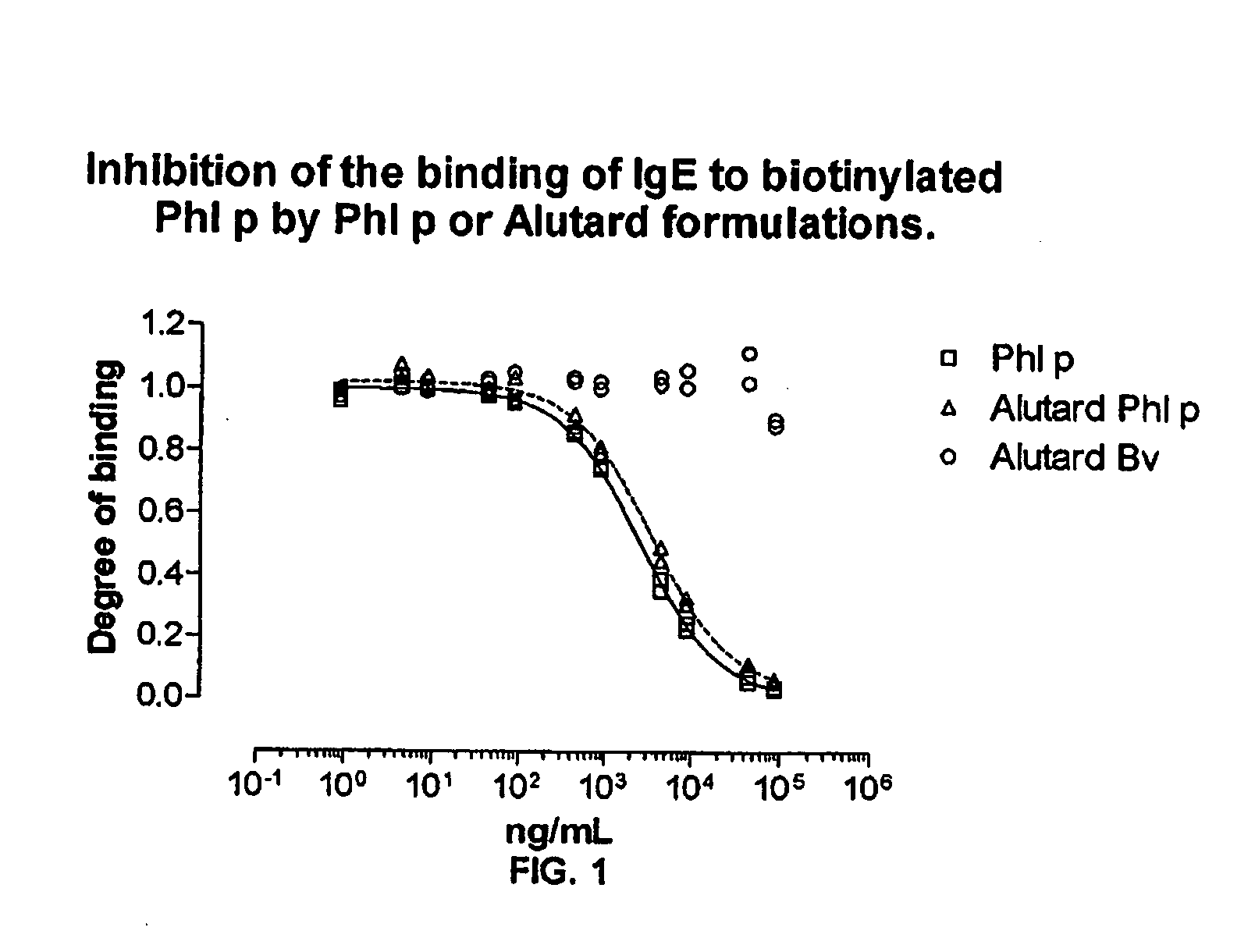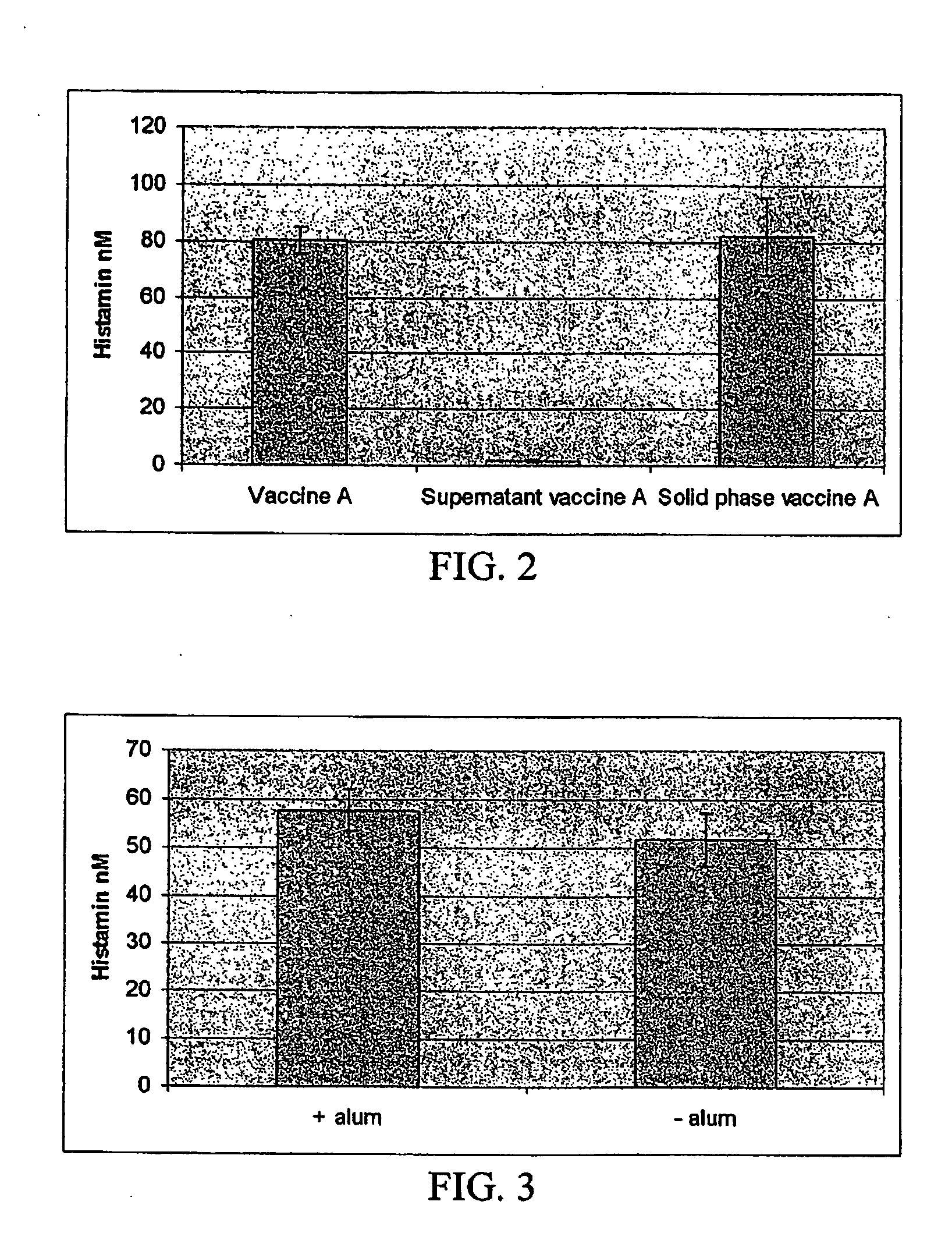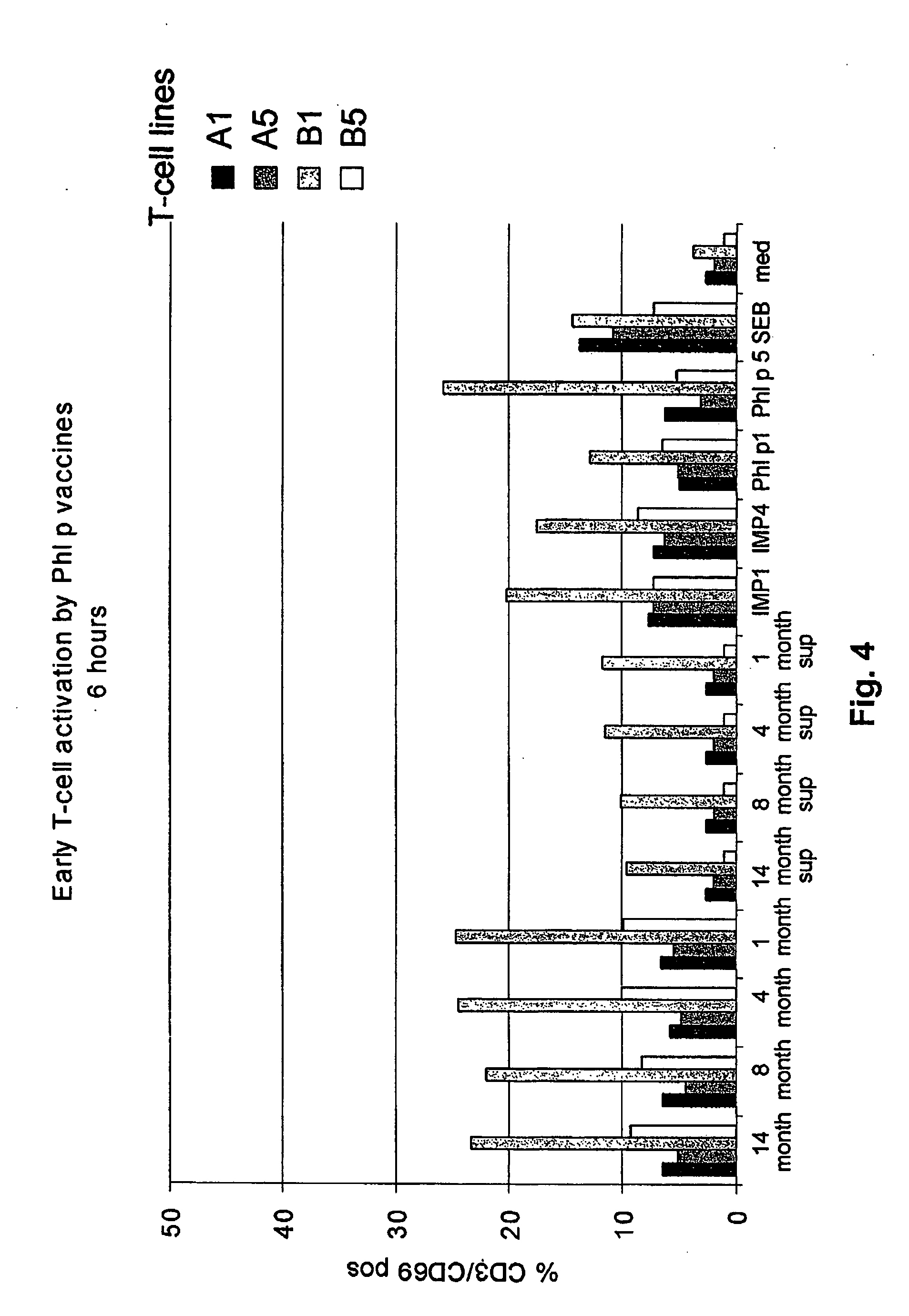Method of evaluating the immunological activity of a vaccine
a vaccine and immunological activity technology, applied in the field of in vitro method of evaluating the immunological activity, can solve the problems of inability to bond allergens and inability to fully understand the mechanism and nature of the adsorption of antigen to the solid phase carrier
- Summary
- Abstract
- Description
- Claims
- Application Information
AI Technical Summary
Benefits of technology
Problems solved by technology
Method used
Image
Examples
second embodiment
In a second embodiment, the displacing treatment comprises contacting the mixture with anions, such as phosphate ions, citrate ions, lactate ions, acetate ions, sulphate ions, borate ions and oxalate ions, preferably, phosphate ions.
Preferably, the displacement is carried out at a pH of from 4 to 10, more preferably from 5 to 9, and most preferably from 6 to 8. Preferably, the displacement is carried out at a temperature of from 32° C. to 42° C., more preferably from 35° C. to 39° C., and most preferably from 36° C. to 38° C.
Measurement of Antibody Binding Capacity
In connection with the present invention the expression “antibody binding capacity” means the level of B cell epitopes available in the vaccine for antibody binding. The measurement of antibody binding capacity of the vaccine preparation may be carried out using any suitable method or immunoassay capable of performing such a measurement, wherein the antibody is bound to an antibody solid phase. Suitable types of assay...
third embodiment
In the invention, the vaccine is subjected both to a measurement of the immunological activity of the mixture of the liquid phase and the solid phase (measurement 1)), and to a measurement of the immunological activity of antigen in the liquid phase (measurement 2)).
fourth embodiment
In the invention, the vaccine is subjected both to a measurement of the immunological activity of antigen in the liquid phase (measurement 2)), and to a measurement of the immunological activity of antigen in the solid phase (measurement 3)).
PUM
| Property | Measurement | Unit |
|---|---|---|
| diameter | aaaaa | aaaaa |
| diameter | aaaaa | aaaaa |
| diameter | aaaaa | aaaaa |
Abstract
Description
Claims
Application Information
 Login to View More
Login to View More - R&D
- Intellectual Property
- Life Sciences
- Materials
- Tech Scout
- Unparalleled Data Quality
- Higher Quality Content
- 60% Fewer Hallucinations
Browse by: Latest US Patents, China's latest patents, Technical Efficacy Thesaurus, Application Domain, Technology Topic, Popular Technical Reports.
© 2025 PatSnap. All rights reserved.Legal|Privacy policy|Modern Slavery Act Transparency Statement|Sitemap|About US| Contact US: help@patsnap.com



